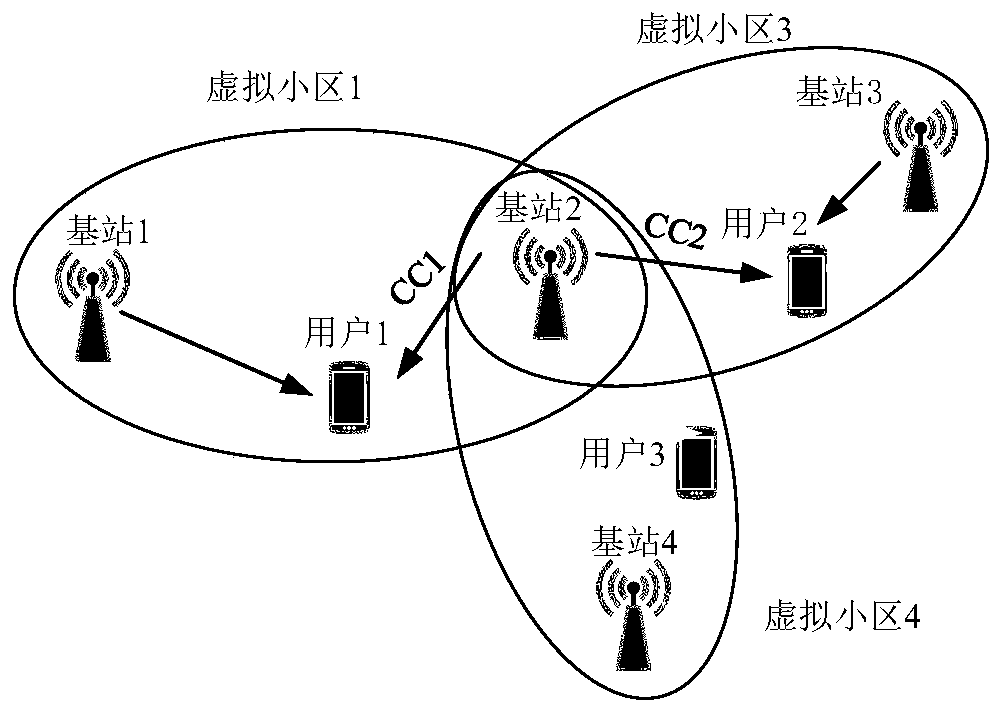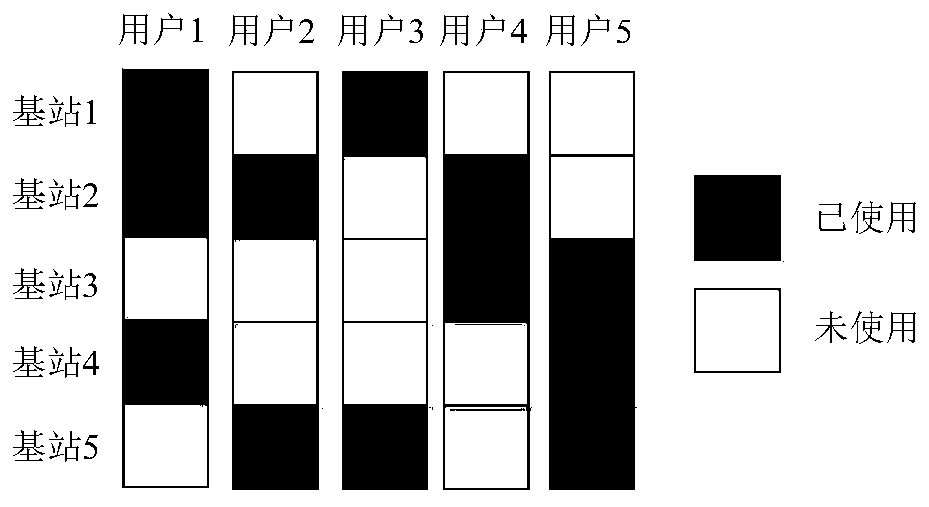A Carrier Allocation Method for Virtual Cell Based on Maximum SNR
A virtual cell and carrier allocation technology, applied in wireless communication, electrical components, etc., can solve the problems of poor signal reception quality of edge users and low system average spectrum efficiency, so as to improve signal reception quality and system average spectrum efficiency , the effect of increasing capacity
- Summary
- Abstract
- Description
- Claims
- Application Information
AI Technical Summary
Problems solved by technology
Method used
Image
Examples
Embodiment Construction
[0028] The present invention will be further described below. The following examples are only used to illustrate the technical solution of the present invention more clearly, but not to limit the protection scope of the present invention.
[0029] Now, the standard of Component Carrier Allocation based on the Maximum SNR (CAMS) is described as follows:
[0030] (1) User r selects the initial serving small base station according to formula (1), if the set of these small base stations is the virtual cell Ω of user s s A subset of , then r and s are located in the same virtual cell Ω s .
[0031] (2) Each small base station in a virtual cell uses the same CC to provide services for users in the virtual cell.
[0032] (3) If the small base station m wants to serve users in different virtual cells, then for a certain CC, the small base station always uses this CC to serve the user that receives the strongest signal from the base station. For example, suppose the small base stat...
PUM
 Login to View More
Login to View More Abstract
Description
Claims
Application Information
 Login to View More
Login to View More - R&D
- Intellectual Property
- Life Sciences
- Materials
- Tech Scout
- Unparalleled Data Quality
- Higher Quality Content
- 60% Fewer Hallucinations
Browse by: Latest US Patents, China's latest patents, Technical Efficacy Thesaurus, Application Domain, Technology Topic, Popular Technical Reports.
© 2025 PatSnap. All rights reserved.Legal|Privacy policy|Modern Slavery Act Transparency Statement|Sitemap|About US| Contact US: help@patsnap.com



